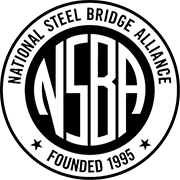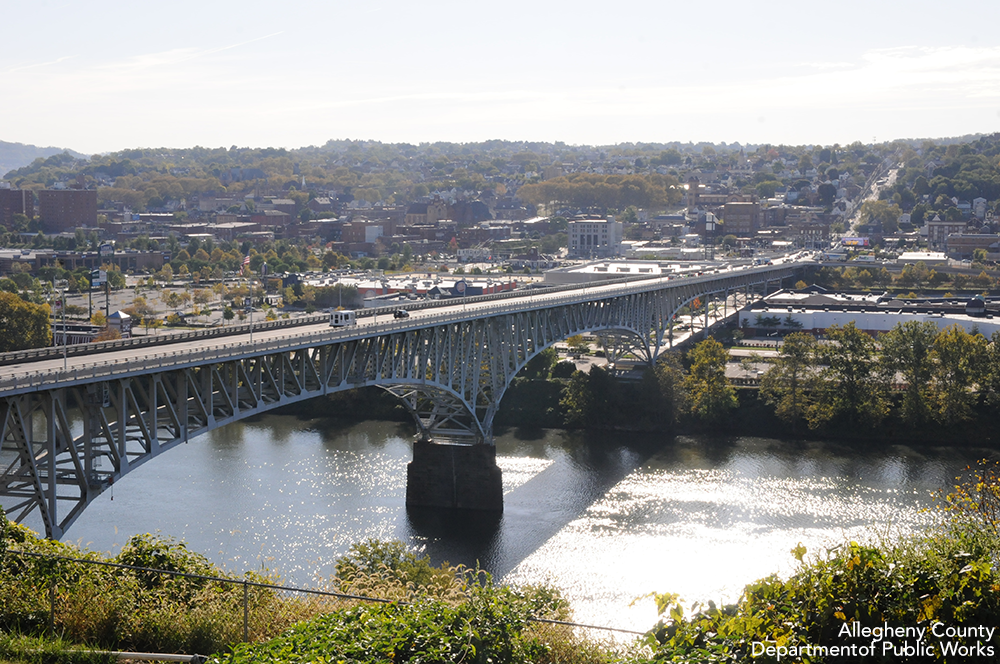National Steel Bridge Alliance
Featured Historic Bridge
Homestead Grays Bridge | Pittsburgh, PA
Construction completed 1937
While downtown Pittsburgh is known for iconic long-span steel bridges like the Fort Pitt Bridge, the Liberty Bridge, and the Three Sister bridges, there are several impressive and treasured long-span river crossings outside of the downtown area that do not necessarily receive the same fanfare. One such bridge is the Homestead Grays Bridge, which is a high-level steel bridge nearly 100 feet above the Monongahela River, carrying traffic between the neighborhoods of Squirrel Hill and Homestead, east of downtown Pittsburgh.
Opened in 1937, this impressive steel superstructure, originally known as the Homestead High-Level Bridge, was designed by Allegheny County with George S. Richardson as chief engineer. American Bridge Company constructed it. The total length of the bridge is approximately 3,100 ft, and it was designed to carry four traffic lanes and a pedestrian walkway on each side. Additionally, the bridge was designed to carry trolley traffic on rails placed in the center two lanes.
At the south end, there is an approach plate girder group, supported on steel portal braced bents, consisting of 7 girder spans ranging from 63 ft to 101 ft long. Next, there is a six-span continuous Wichert truss with parallel chords, supported on steel portal braced bents, consisting of two 128-ft end spans and four 163-ft intermediate spans. The main river crossing is a four-span continuous Wichert truss with curved bottom chords consisting of two 291-ft end spans and two-533.5 ft river spans. For both truss units, the top and bottom truss chords are riveted built-up steel box-shaped sections; the verticals and diagonals are a mix of wide-flange steel shapes and riveted built-up steel box-shaped sections.
While the Homestead Grays Bridge is not listed in the Historic American Engineering Record, it is unique. It is the first known use of the Wichert self-adjusting truss and may be only one of a few such bridges still in service today. This type of truss was developed and patented by E. M. Wichert of Pittsburgh in 1930. The Wichert truss is a continuous steel truss with hinged quadrilaterals (rhomboids) over the interior piers where a hinge is in each corner. The use of the hinged quadrilaterals allows for each span to be considered independently for member force calculations and design. (Google Street View shows quadrilaterals in the Homestead Grays bridge 6-span truss.) In the 1930s, well before the use of computers in bridge design, the analysis and determination of member forces of continuous span trusses were statically indeterminate and difficult to calculate. The Wichert truss, on the other hand, is statically determinate, and influence lines could be readily used to determine member forces and complete the design.

In his 1932 book, "The Wichert Truss," David B. Steinman writes that the Wichert truss retains the rigidity of the rigid continuous truss but possesses several advantages, such as economy in truss material and foundations; economy in cost and construction time; adaptability to beauty; and ease of analysis. Member stresses are negligibly affected by pier settlement and a Wichert Truss may be used where cantilevered truss construction would ordinarily be required. The first appendix of Steinman’s book includes letters (reports) that are impartial reviews of Wichert’s design, from well-known engineers such as Gustav Lindenthal and J.E. Greiner.
In 2002, the bridge was renamed "Homestead Grays" to honor the great Negro League baseball team that played during the first half of the 20th century. The team played games at Forbes Field and Greenlee Field in Pittsburgh, winning several Negro National League pennants before splitting games between Pittsburgh and Washington. The Grays were led by players such as Hall of Famers Josh Gibson, "Cool Papa" Bell, Oscar Charleston, Smokey Joe Williams, and several other star players.
The Homestead Grays Bridge had a major rehabilitation in 2006 and 2007 that included widening the bridge deck while maintaining two lanes of traffic on the bridge at all times. The new deck is six feet wider for the traffic lanes, while also providing pedestrian walkways on each side of the bridge. The steel superstructure was repainted, and the railings and lighting were replaced with replications of the original configurations. In 2019, Allegheny County undertook a bridge preservation project to make minor steel repairs; downspout and scupper repairs and cleanout; and barrier and deck repairs. With this type of preservation maintenance, this unique steel bridge should be in service well beyond its 100-year anniversary!
Photo Gallery
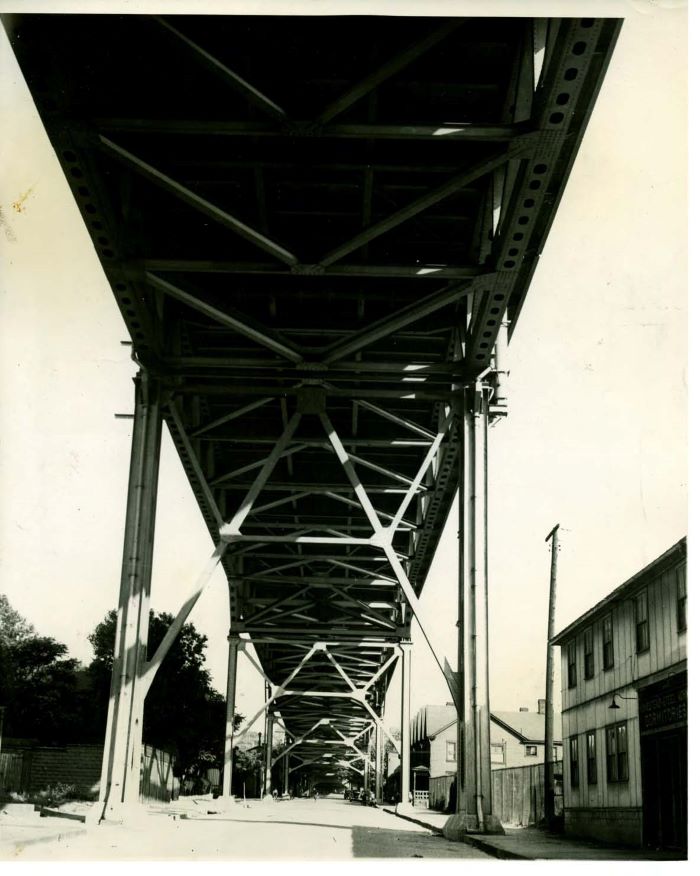
View under the six-span continuous truss, looking away from the river around 1937. The support in the foreground is supporting the ends of the 4-span and 6-span trusses.
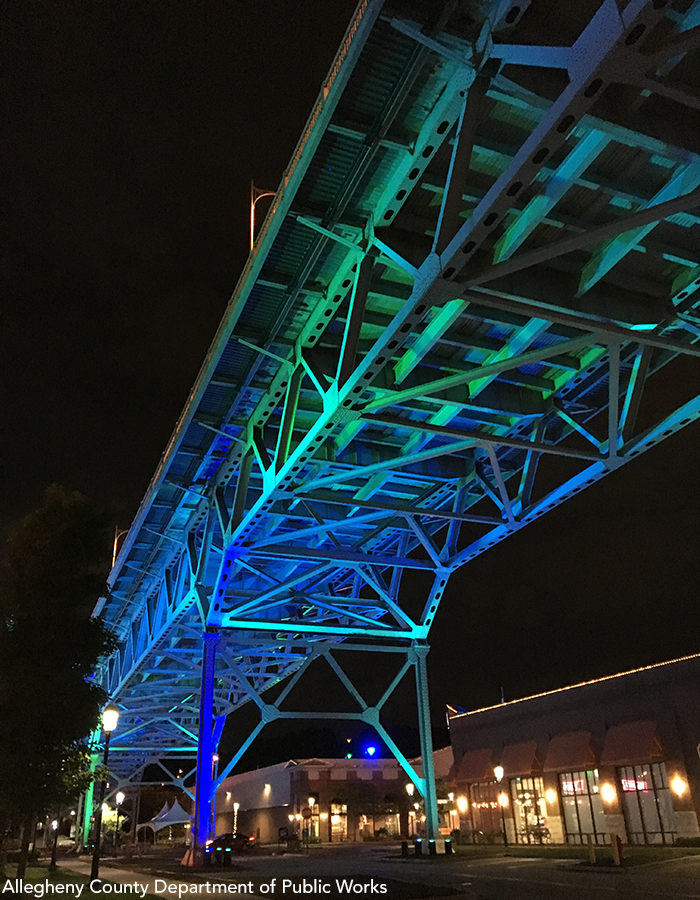
Current view of the Homestead Grays Bridge 6-span continuous truss, with evening lighting.
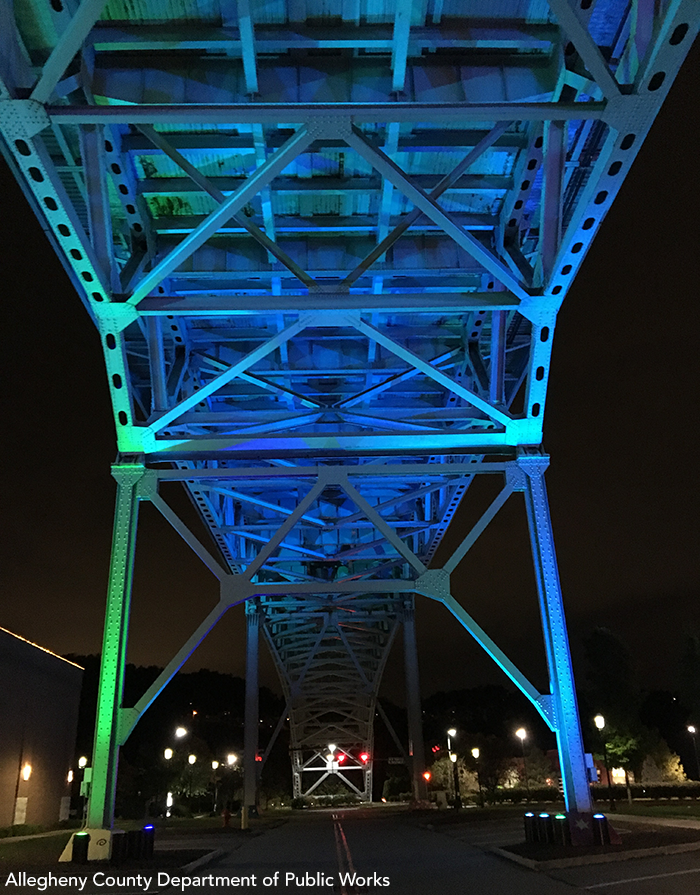
Current view of the Underside of the Homestead Grays Bridge, looking towards the river with evening lighting.
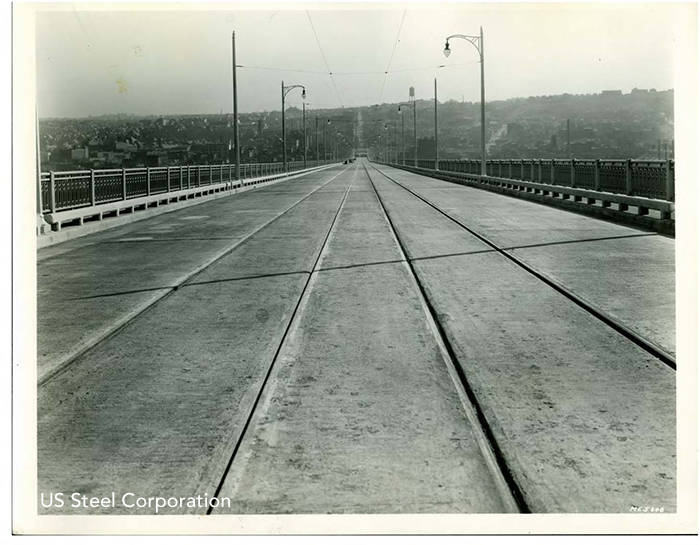
View of the Homestead Grays Bridge deck, with trolley rails in the center lanes, around 1937.
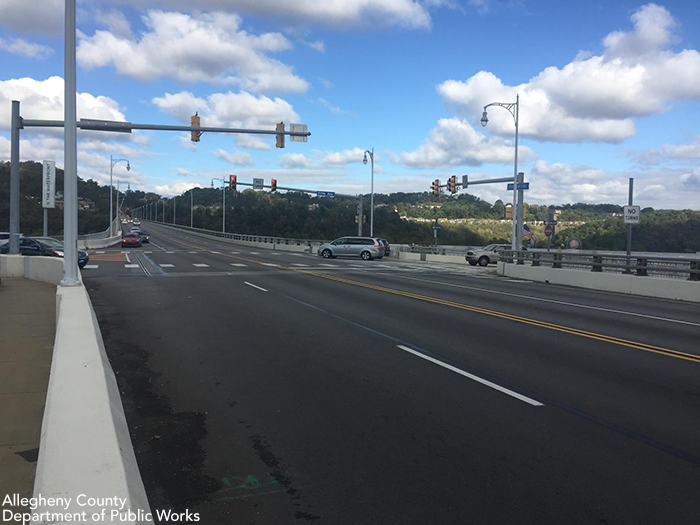
Current view of the Homestead Grays Bridge deck, looking towards Squirrel Hill.
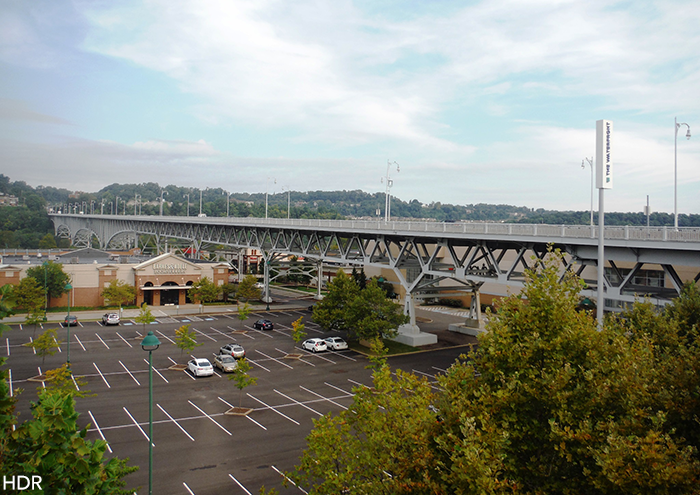
Current view of the 6-span continuous truss and 4-span continuous truss of the Homestead Grays Bridge, looking towards Squirrel Hill.
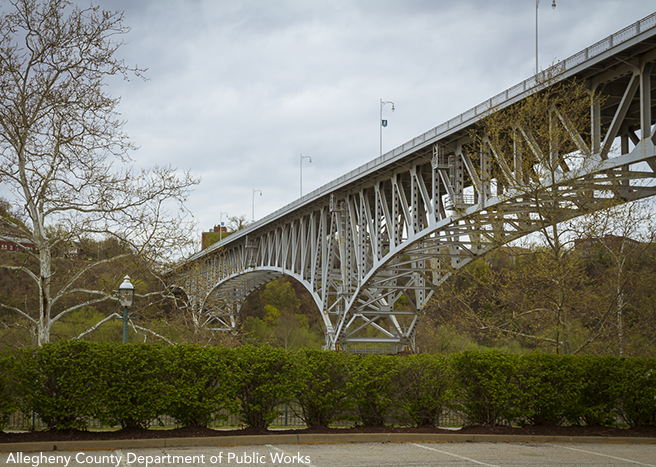
Current view of the Homestead Grays Bridge, looking at the spans over the Monongahela River.
